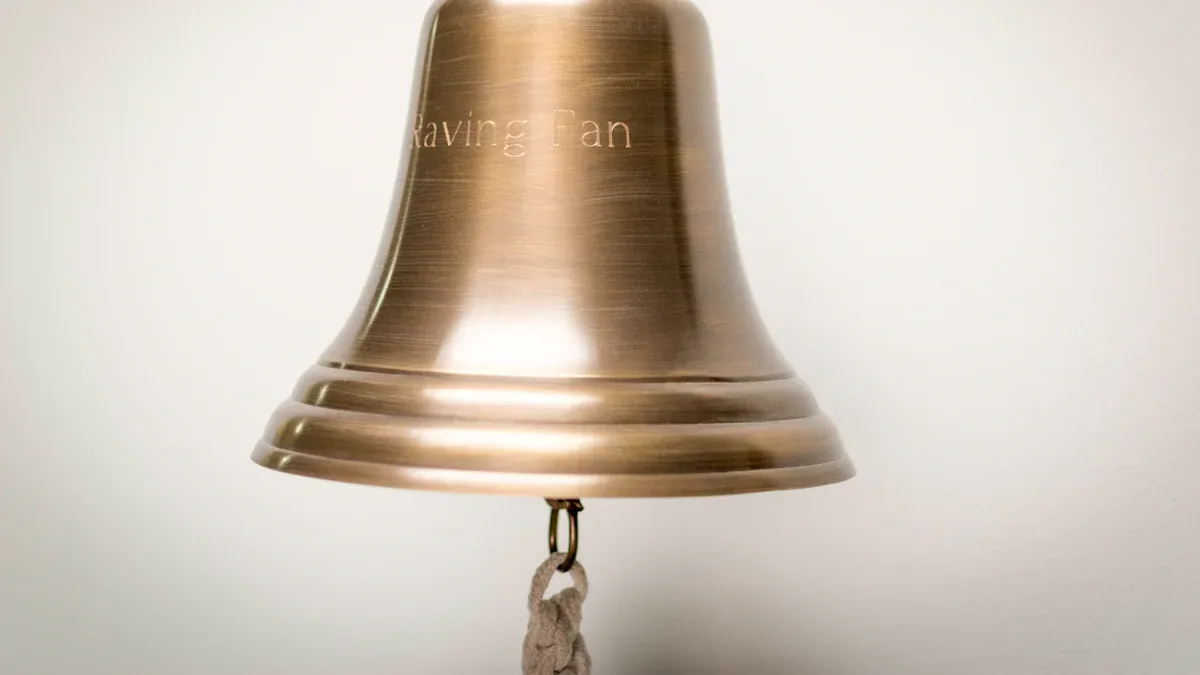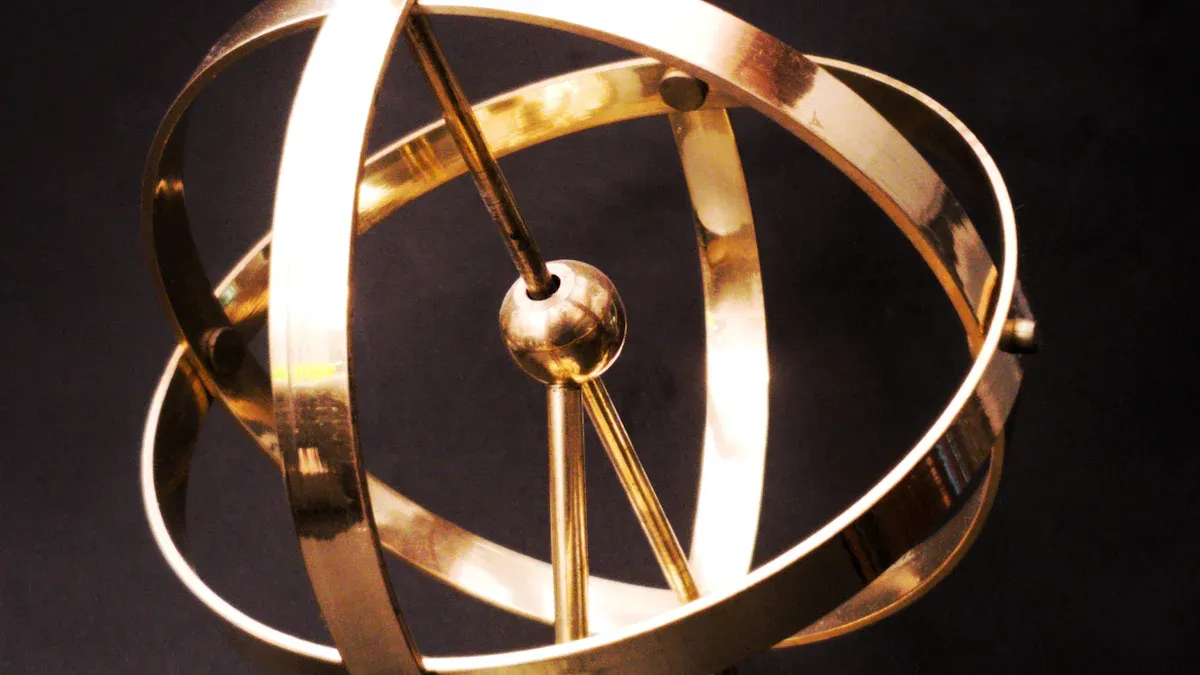
Choosing the right material is essential for any project. When evaluating brass vs bronze vs copper, it’s important to consider factors such as composition, machinability, and corrosion resistance. Each of these products offers unique properties. For instance, brass is known for its excellent machinability, while bronze is recognized for its superior durability. On the other hand, copper is distinguished by its outstanding conductivity. For more information, feel free to contact us.
Key Takeaways
- Brass is ideal for plumbing and electrical applications due to its good corrosion resistance and machinability.
- Bronze offers superior strength and durability, making it the best choice for marine environments and heavy-duty components.
- Copper excels in electrical conductivity and has antimicrobial properties, making it essential for electrical and healthcare applications.
Benefits of Brass

Corrosion Resistance
Brass is known for its good corrosion resistance, making it a popular choice in various applications. However, its performance can vary depending on the environment. In humid or acidic conditions, brass may corrode, especially when exposed to chlorides. This can lead to stress corrosion cracking, which is something to keep in mind when selecting materials for specific projects.
Tip: If you’re working in a particularly harsh environment, consider using stainless steel, which has excellent corrosion resistance due to its chromium content.
Malleability and Workability
One of the standout features of brass is its malleability. This means that brass can be easily shaped and formed without breaking. This property makes it an excellent choice for intricate designs and detailed work. Additionally, brass is easy to machine, allowing for precise cuts and fittings.
- Brass can be easily cast, forged, or extruded, which opens up a wide range of possibilities for manufacturers.
- Its workability also means that it can be polished to a high shine, making it aesthetically pleasing for decorative applications.
Applications in Plumbing and Electrical
Brass plays a crucial role in both plumbing and electrical applications. In plumbing, C23000 brass, often referred to as Red Brass, is commonly used for fittings and valves. Its excellent corrosion resistance makes it ideal for water systems.
- Brass is widely used in plumbing fittings, which are essential for connecting plumbing systems.
- In electrical applications, brass is found in connectors, switches, and lighting fixtures due to its conductivity and resistance to corrosion.
In fact, a significant percentage of the plumbing and electrical industries rely on brass components. This highlights the material’s importance in modern construction and infrastructure.
Benefits of Bronze
Strength and Durability
Bronze stands out for its impressive strength and durability. Many bronze alloys exhibit high tensile strength, sometimes exceeding 700 MPa. For instance, general bronze typically ranges from 105 to 415 MPa, while high-strength bronze can surpass 700 MPa. This makes bronze a reliable choice for demanding applications.
| Type of Bronze | Tensile Strength (MPa) |
|---|---|
| General Bronze | 105 – 415 |
| High Strength Bronze | > 700 |
| Architectural Bronze | 60 KSI (approx. 414 MPa) |
Resistance to Corrosion and Wear
When it comes to corrosion resistance, bronze excels, especially in marine environments. It outperforms both brass and copper, which can struggle in salty conditions. Bronze’s ability to resist corrosion makes it a preferred material for components exposed to harsh elements.
| Material | Corrosion Resistance in Marine Environments |
|---|---|
| Bronze | Excellent, especially in saltwater |
| Brass | Susceptible due to dezincification |
| Copper | Can oxidize and develop a patina |
Applications in Marine and Industrial Uses
Bronze finds extensive use in marine and industrial applications. In fact, over 20% of marine components and more than 40% of industrial components are made from bronze. Its strength and corrosion resistance make it ideal for ship fittings, propellers, and industrial machinery.
Tip: If you’re considering materials for marine applications, bronze is often the best choice due to its durability and resistance to wear.
Benefits of Copper
Excellent Conductivity
Copper is renowned for its exceptional electrical conductivity. In fact, it boasts a conductivity value of 100% IACS (International Annealed Copper Standard). This makes copper the go-to choice for electrical applications. To put it in perspective, here’s how it compares to brass and bronze:
| Material | % Conductivity |
|---|---|
| Copper | 100 |
| Brass | 28 |
| Bronze | 15 |
This high conductivity allows copper to efficiently transmit electricity, making it ideal for wiring and electrical components.
Antimicrobial Properties
Another remarkable feature of copper is its antimicrobial properties. Studies show that solid copper surfaces can significantly reduce microbial burden in healthcare settings. In fact, these surfaces can kill 99.9% of microorganisms within just two hours. This effectiveness comes from copper ions that disrupt bacterial membranes and induce oxidative stress. As a result, copper serves as a powerful ally in preventing healthcare-associated infections.
Applications in Electrical and Construction
Copper plays a crucial role in various sectors, especially in electrical and construction applications. In 2023, the Building & Construction Industry accounted for over 44.2% of the copper mining market. Here are some key applications:
- Electrical wiring and plumbing systems
- HVAC systems for efficient heat transfer
- Durable infrastructure due to its corrosion resistance
The demand for copper in construction continues to grow, driven by global urbanization and infrastructure expansion. Its reliability and performance make it a preferred material in many projects.
Comparative Analysis: Brass vs Bronze vs Copper

Durability
When comparing the durability of brass, bronze, and copper, bronze takes the lead. It boasts the highest durability rating due to its high strength and resistance to salt corrosion. Here’s a quick look at how they stack up:
| Metal | Durability Rating | Key Properties |
|---|---|---|
| Bronze | Highest | High strength, salt corrosion resistance |
| Brass | Moderate | Better corrosion resistance than copper |
| Copper | Lowest | Forms protective patina but less durable overall |
Brass is moderately durable, making it suitable for many applications. However, it can be prone to cracking and erosion under certain conditions. Copper, while flexible and easy to work with, tends to be less durable overall. It forms a protective patina over time, which can help but doesn’t match the strength of bronze.
Corrosion Resistance
Corrosion resistance is another critical factor when choosing between brass, bronze, and copper. Each material reacts differently in various environments. Here’s what you need to know:
- Bronze exhibits superior corrosion resistance in marine environments compared to brass and copper.
- It is particularly effective against corrosion in saltwater and sea environments.
- The durability and hardness of bronze make it ideal for marine applications.
In fact, according to ASTM standards, bronze shows excellent oxidation resistance, making it suitable for both marine and chemical environments. Brass performs well in marine settings but is more susceptible to dezincification, especially in salty conditions. Copper, while generally resistant, can oxidize and develop a patina, which may not be desirable in all applications.
Malleability and Fabrication
Malleability and ease of fabrication are essential considerations for manufacturers. Here’s how brass, bronze, and copper compare:
| Material | Machinability | Weldability | Durability | Cost |
|---|---|---|---|---|
| Brass | Least machinable; requires special techniques | Softer alloys are more weldable | Prone to cracking and erosion | Less expensive due to zinc content |
| Bronze | More rigid; some machining complications | Challenging due to cracking under pressure | Most durable; low corrosion rate | More expensive due to strength and corrosion resistance |
| Copper | Best machinability; flexible | Excellent weldability | Durable; flexible but prone to scratches | Most expensive; excellent conductivity |
Brass is the least machinable, often requiring special techniques for shaping. While it’s cost-effective, its workability can be a drawback. Bronze, while strong, can present challenges during machining due to its rigidity. Copper stands out for its excellent machinability and weldability, making it a favorite in many industries despite its higher cost.
Choosing the Right Material
Assessing Your Specific Needs
When selecting between brass, bronze, and copper, start by assessing your specific needs. Consider the following criteria:
- Mechanical properties: Understand the strength and flexibility required for your project.
- Conductivity: Determine if electrical conductivity is a priority.
- Corrosion resistance: Evaluate the environment where the material will be used.
- Machinability: Think about how easy it is to work with the material.
- Specific application requirements: Identify any unique needs for your project.
These factors will guide you in making the best choice for your application.
Cost Considerations
Cost is another crucial factor in material selection. Here’s a quick look at the average market prices per kilogram for brass, bronze, and copper in 2024:
| Metal Type | Price per Pound | Price per Kilogram |
|---|---|---|
| #1 Copper Bare Bright | $3.90 | $8.60 |
| #1 Copper Wire & Tubing | $3.80 | $8.38 |
| #2 Copper Wire and Tubing | $3.70 | $8.16 |
| Red Brass | $2.33 | $5.15 |
| Yellow Brass | $2.18 | $4.81 |
As you can see, copper tends to be the most expensive option, while brass is generally more affordable. Keep these prices in mind when budgeting for your project.
Long-term Performance Expectations
Long-term performance is vital, especially for outdoor installations. Here’s how the three materials compare:
| Metal | Corrosion Resistance Level | Average Lifespan |
|---|---|---|
| Bronze | High | 40-50 years |
| Brass | Medium-High | 30-40 years |
| Copper | Medium | 50+ years |
Bronze offers the best corrosion resistance and lifespan, making it ideal for harsh environments. Brass performs well but may not last as long, while copper can be durable but requires maintenance to prevent corrosion.
In summary, each material—brass, bronze, and copper—offers unique benefits. Brass shines in plumbing and electrical applications due to its good corrosion resistance and workability. Bronze excels in strength and durability, making it ideal for marine environments. Copper stands out for its excellent conductivity and antimicrobial properties.
Tip: When choosing a material, consider specific applications and consult experts for tailored recommendations.
| Material | Composition | Corrosion Resistance | Strength | Electrical Conductivity | Applications |
|---|---|---|---|---|---|
| Brass | Copper + Zinc | Moderate | High | Good | Plumbing, Musical Instruments |
| Bronze | Copper + Tin | High | Very High | Moderate | Marine Environments, Heavy-duty Components |
| Copper | Pure Copper | Low | Moderate | Very High | Electrical Uses, High-performance Applications |
By evaluating your needs, you can make an informed decision that best suits your project.
FAQ
What is the main difference between brass, bronze, and copper?
Brass contains copper and zinc, bronze combines copper and tin, while copper is a pure metal. Each has unique properties suited for different applications.
Which material is best for plumbing?
Brass is often the best choice for plumbing due to its corrosion resistance and workability. It holds up well in water systems.
Can bronze be used in electrical applications?
While bronze can conduct electricity, it’s less efficient than copper. For electrical applications, copper remains the preferred choice due to its superior conductivity.
